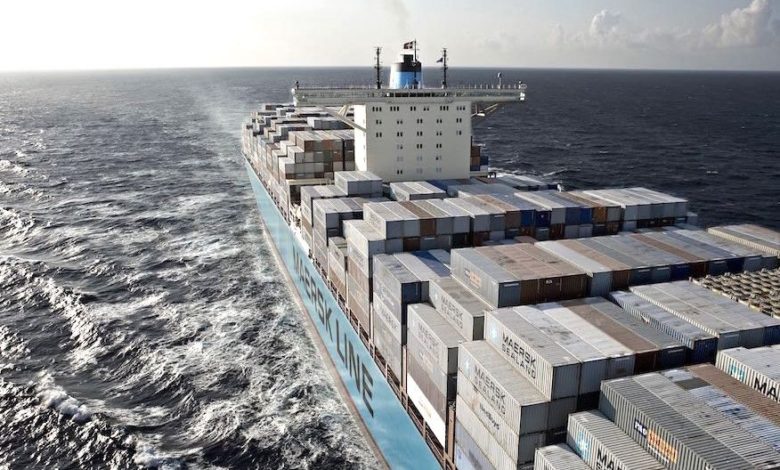Closing the data gap behind shipping’s ESG strategies

Carole Plessy, head of maritime at OneWeb, on how to get and handle ESG data
Shipowners and operators are under increasing pressure from investors, regulators, and customers to demonstrate strong Environmental, Social, and Governance (ESG) performance. This pressure is likely to increase as shipping moves to decarbonise, improve crew-welfare, and show greater transparency. ESG performance is now redefining the industry and the ripple effect is being felt along supply chains; influencing supplier and customer relationships, and catalysing new commercial thinking.
Traditional cyclical business models, regulatory uncertainty, and shifts in global economic patterns make the long-term picture difficult for the maritime industry to see – but this isn’t an issue that can be kicked into the long-grass.
Fortunately, this demand for demonstrable ESG performance has created a hotbed of opportunity for cleantech and data firms that can provide shipowners and charterers with optimisation and monitoring solutions that drive efficiencies, reduce emissions and monitor performance in pursuit of decarbonisation goals. Yet, while the tools are there to support this push, why is forging and implementing an ESG-focused strategy proving so difficult for some shipowners and operators?
One of the biggest restricting factors is the lack of comprehensive, joined up insights to support decision making. This is due to shipowners and operators developing ESG strategies relying on fragmented, and sometimes out of date data sets from across their operations. Without a complete picture of operational performance – including emissions and fuel usage – it is almost impossible to identify where adjustments need to be made and the best way of approaching them. This challenge is also seen more broadly throughout shipping’s wider eco-system with banks and asset managers, as well as cargo owners, unable make a true analysis of companies’ ESG performance due to a lack of cohesive, transparent, and up-to-date information.,
This is a universal challenge and the importance of these data insights is seen in spending: according to research released by Optimas in 2020, spending on ESG data in 2021 could hit $1bn, with estimated annual growth rates of 20%. However, as much as this is a global issue as far as supply chains go, the data gap is most pronounced in shipping, which in many ways also sits as a last bastion of opaque business practices.
This is now set to change as the need for stronger ESG performance and emerging technologies align. There is now an opportunity to turn vessels and rigs into seaborne data centres that can provide the kind of decision-making intelligence that is already commonplace in land-based supply chains. The emergence of globally available fast, reliable, and low-latency connectivity provided by Low Earth Orbit (LEO) satellite networks is critical. These are enabling the application of real-time monitoring, data exchange, and other digital systems needing ship-to-shore connectivity onboard vessels.
Working together, these technologies can make real contributions to ESG strategies and solutions. Environmentally, monitoring systems can relay real-time data on fuel usage, emissions, and maintenance requirements, effectively turning vessels into ocean-born monitoring stations and enabling operators to best manage routes, maintenance schedules, and more to ensure efficiency and minimise carbon footprints. And socially, crew can enjoy closer contact through video messaging, WhatsApp, and social media with friends, family, and loved ones ashore, alongside gaining better access to streaming entertainment, whether music, movies, or games. This technological connectivity can also open-up better access to medical assistance – both physical and mental. And for governance, these technologies can digitally expediate compliance through real-time tracking and ensuring forms, regulations, and licenses are up to date and complete.
With better data insights, shipowners and operators will be empowered to develop robust ESG strategies that advance environmental performance, improve crew welfare, and enable more accurate reporting to support transparent ocean governance. A leading example of this can be seen in Maersk’s sustainability reports, which cover the core tenets of ESG.
In fact, Maersk itself highlights the importance of digital connectivity in providing much of the data in its reports, particularly around emissions, but also in ensuring its people are “safe and engaged.” Maersk’s CEO, Søren Skou, also notes in his introduction to their 2020 report, the impetus to lead on ESG issues due to “an acceleration in expectations from all stakeholders, not least customers, investors and employees.”
Fundamentally, it is clear that companies like Maersk can recognise that ESG strategies are increasingly fundamental to business strategies – and it appears clear from Maersk’s own reports that digital connectivity is fundamental to enabling them to develop their strategy.
The concept of ships as globally connected, carbon neutral, seaborne data platforms may seem fanciful at this point. However, the reality is that there is a both commercial pressure and the technological opportunity to enable this data transformation within the industry. And this shift will enable the data-driven ESG strategy development that will realise real commercial, financial and reputational benefits for owners and charterers – as well as investors, regulators, and customers.
In conclusion, collecting ESG data is a necessity and it is becoming easier as many actors are working hard to make this a reality and making this happen real-time. But let us not forget that the goal is not just gathering the data, it is really understanding what the data says and how to act on these insights, to deliver a cleaner, responsible, accountable industry. Shaping the future needs to start now, and taking action needs to be immediate.
